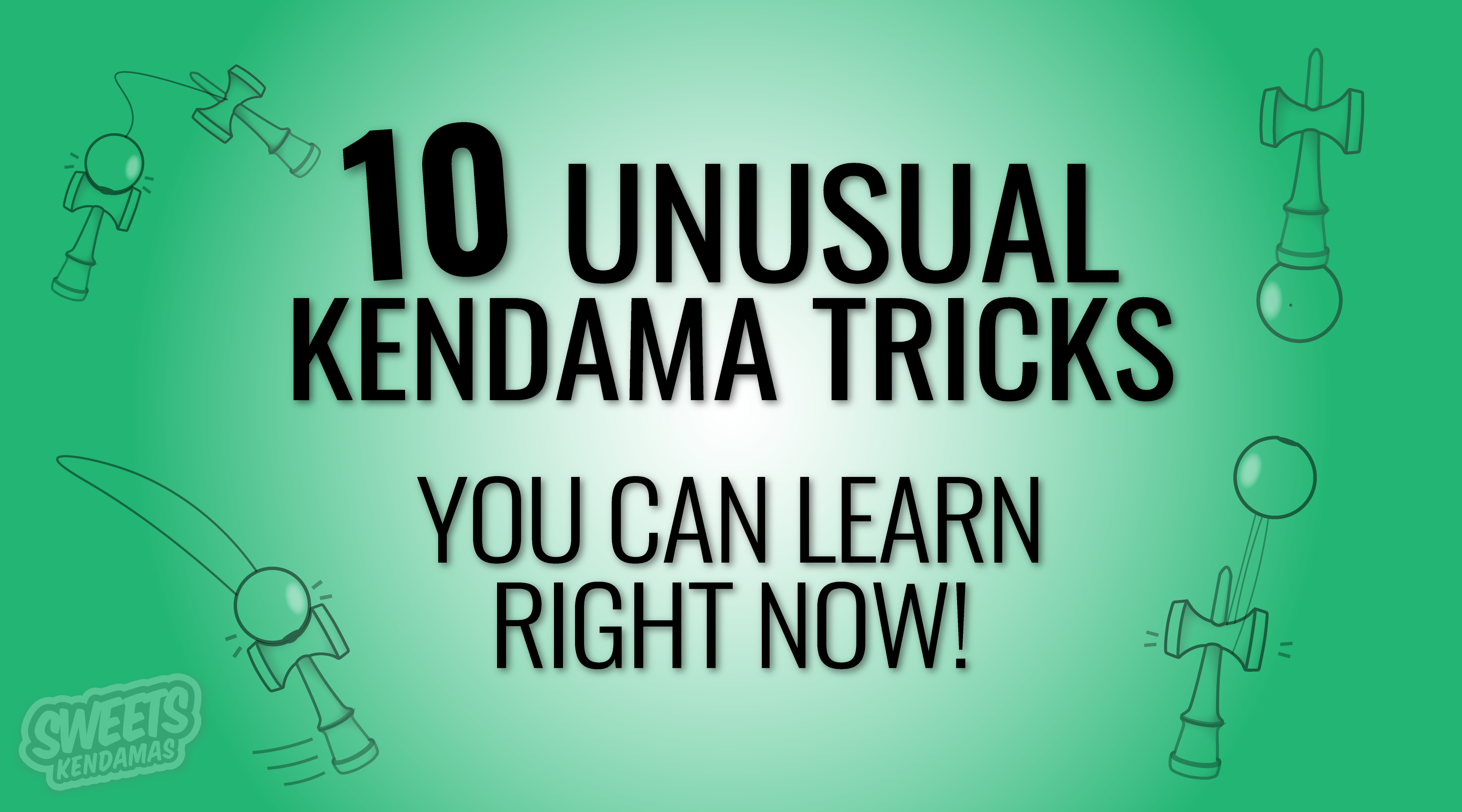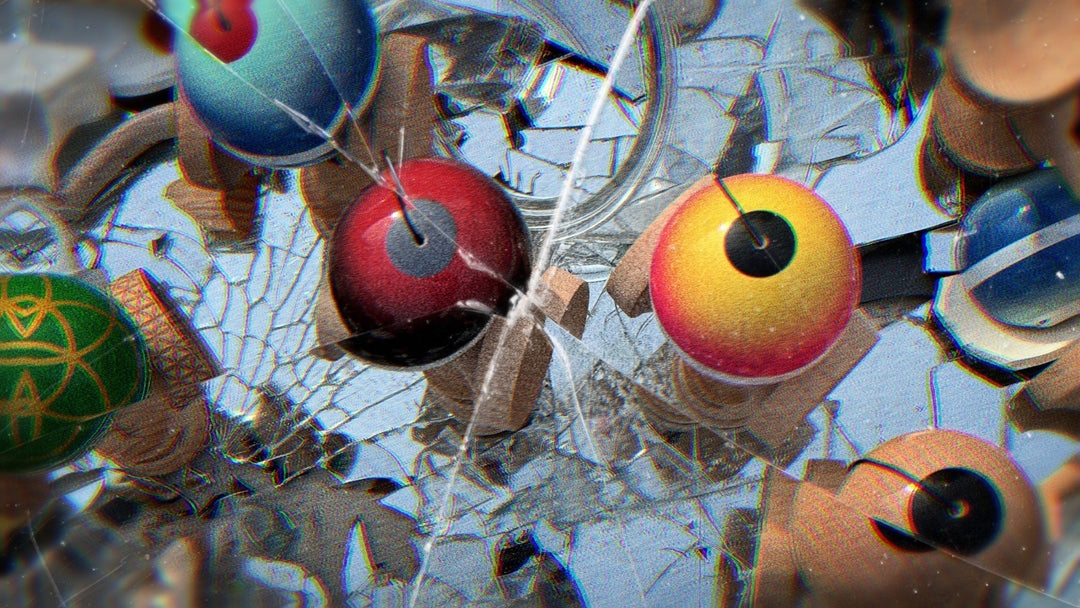Make sure to subscribe to our YouTube Channel for even more kendama tutorials!
Generally, you begin playing kendama by learning how to catch in the cups and on the spike. Once you sink your teeth into the game, your skills will expand beyond just cups and the spike, combining them into lines/combos or even venturing down other paths like Stall and Balance tricks. Stick around long enough and you’ll find that players never stop coming up with new ways to do tricks.
We’ve compiled a list of 10 fun, creative, and unusual tricks that will challenge your imagination and show you how wild kendama tricks can get.
*Check out our page, Sweets' First 50 Kendama Tricks to Master, to hone in on all of the groundwork tricks you need to know!*
Wall Stall
Tricks you should know: None!
The jury is still out on how this trick works exactly. If we had to guess, it’s likely that heat created from the friction of rubbing the ken up against a painted wall is what causes it to stick when you’re doing a Wall Stall. It seems like Latex-based paint specifically reacts this way, an extremely common paint used for painting indoors, but won’t work on some other acrylic or oil-based paints.
Wall Stall is more of a fun party trick than a challenging trick to surprise your friends with. Make sure that you don’t do this trick on any nice walls or on private property, like at work or school, as there’s a chance that you can leave scuffs and marks behind.
Rat Tail
Tricks you should know: Big Cup
This is a cool trick you can do with the string to get an entirely different outcome other than just catching in a cup or on spike. By pulling the ball up in a way that causes the string to pop out of the other side, you can grab the Bearing/Bead out of the air, causing the ball to rest along the middle of the string. From here, you can go into any other trick you want, so it’s a great idea to experiment and play with!
Levitating Lighthouse
Tricks you should know: Lighthouse
Unlock the illusion of levitation with the Levitating Lighthouse. It’s a trick that makes the kendama look as if it’s defying gravity, floating between the hands.
In reality, a finger is placed inside the hole of the Tama in order to achieve the effect. From the correct angle, it looks pretty convincingly realistic, and can get lots of double-takes at your wizardry!
Glock Switch
Tricks you should know: Airplane, Gunslinger
Glock Switch is an example of a Transition, a move that you can do to move between grips in the form of a trick. It’s a super flashy way of going from a loaded Tama Grip into a loaded Sara Grip. It’ll help a lot to learn how to do Airplane and Gunslinger before trying this trick, to get into it more easily, and to better understand how the mechanics feel when you’re attempting it.
Snake Bite
Tricks you should know: Airplane
Snake Bite is a crazy trick that utilizes the Bearing Bead inside the Tama, like with Rat Tail. Instead of catching the bearing, it’s whipped at the ken and wraps around it like a grappling hook, catching the ken in a hanging position. Since the Bead hooks itself around the string when doing the trick, It’s much easier to accomplish with a Bearing Bead instead of a Plastic Bead. You can get some Bearing Beads in any of our SixFinger String packs if you need some spares.
Aventiss Special
Tricks you should know: Rat Tail
This trick was created and popularized by Aventiss, Grain Theory Pro Kendama Player. It’s a trick you can do with Rat Tail and is a great introduction to more complicated string tricks without being too difficult. This one might be a little tough to understand right away due to the way you need to manipulate your fingers, but if you take your time with learning it, the movements will get smoother and will soon become second nature.
Handcuff
Tricks you should know: Spike
Handcuff is an old-school string trick invented by Jack Smithies. The string goes around the wrist and is looped onto the spike into a position that when let go, locks against the wrist and truly looks like the kendama is handcuffed onto your wrist. When you pull the ken downward, the loop around the spike releases the wrap, allowing you to finish the trick on the spike or in any other position. It’s a fun one to add to your repertoire of tricks that can throw someone for a loop in a game of KEN!
C-Whip
Tricks you should know: None!
C-Whip looks and almost feels impossible, but is another gateway into tricks done WITH the string and can be honed in and perfected just like any other kendama trick. The loop that is created by arcing your finger in a “C” motion catches the ken, hanging by the sarado. Once you land it, you can end it with any other trick you like, Airplane being the most obvious and straightforward finishing move.
Neck Roll
Tricks you should know: None!
Neck Roll is a Rope-Dart-inspired trick and is the only trick on this list that comes with a warning/disclaimer; this one can hurt if you aren’t careful. Make sure you thoroughly review our tutorial before attempting this move.
You don’t need to know any other tricks to learn the Neck Roll, but you do need a very long string to make it work properly. If your string is too short, the Tama will hit your face or head, so make sure you have a really long string before trying this one. Bowing forward and letting the Tama loop around the neck, you then look towards the sky, sending the Tama along on a circular path and off of your neck into any other finishing move you want.
Friendship Spike
Tricks you should know: None!
The only prerequisite to learning the Friendship Spike is having a friend and a second kendama. Like the Wall Stall, it’s not really a difficult kendama trick, just another way to have fun with kendama and your friends.
With a small flick, you drop the Tama resting on your spike down onto the awaiting spike that a friend holds ready. It’s more of a knacky move than a difficult skill; once you feel it out, you can usually do it on command and with any kendama.
If you land one of these tricks, make sure to teach your friends! For more tricks to learn, check out "Top 10 Best Tricks for Getting your Friends into Kendama"!
Subscribe to our YouTube Channel for even more kendama tutorials just like these!






Leave a comment